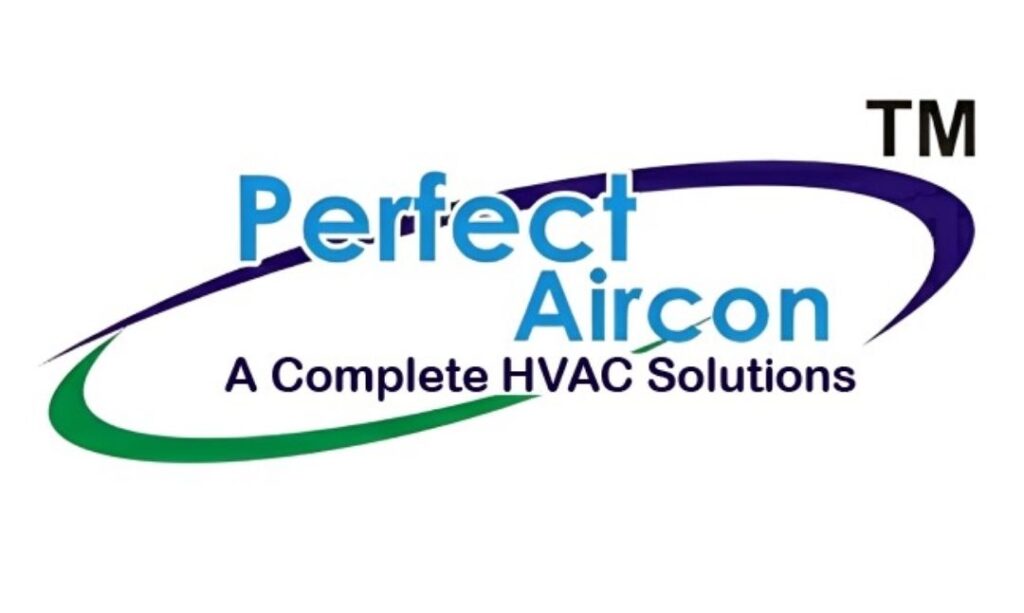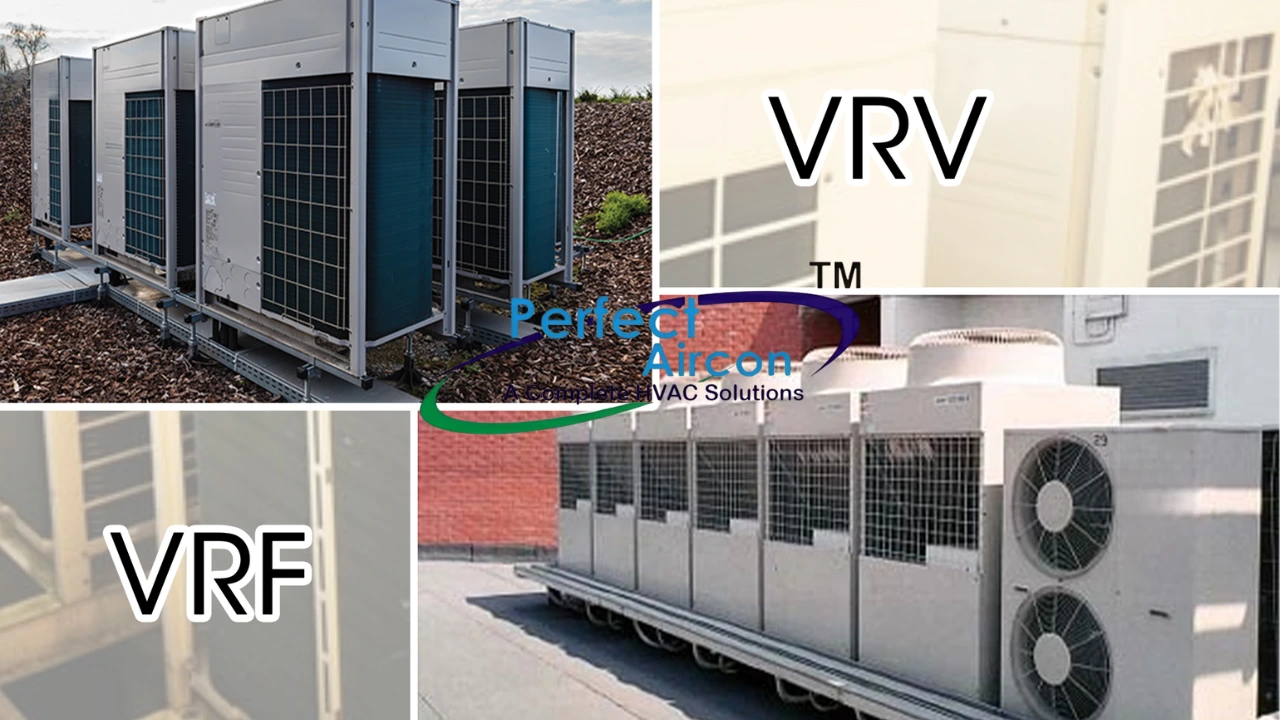VRV and VRF are especially used for commercial and large residential buildings in modern air conditioning systems. At Perfect Aircon, we believe that understanding the nuances between these two systems is essential for making informed decisions when it comes to climate control solutions. But what exactly is the difference between VRV and VRF systems? Are they different? If so, how? Let’s dive into the details.
What Are VRV and VRF?
Both VRV (Variable Refrigerant Volume) and VRF (Variable Refrigerant Flow) refer to advanced air conditioning systems that use refrigerant as the cooling and heating medium. These systems are designed to provide energy-efficient solutions by controlling the amount of refrigerant that flows to multiple indoor units. Different traditional systems, which operate on a simple on/off mechanism, VRV/VRF systems modulate the refrigerant flow based on real-time demand, enhancing comfort and reducing energy usage. They allow multiple indoor units to be connected to one outdoor unit, with the flexibility to operate each indoor unit independently.
What’s the Difference Between VRV and VRF?
| Feature / Aspect | VRV (Variable Refrigerant Volume) | VRF (Variable Refrigerant Flow) |
|---|---|---|
| Terminology | Trademarked term by Daikin | Generic industry term used by other brands |
| Introduced By | Daikin Industries Ltd. (1982) | Other HVAC manufacturers |
| Technology | Identical to VRF (just a branded name) | Identical to VRV |
| Functionality | Modulates refrigerant volume based on demand | Modulates refrigerant flow based on demand |
| Types Available | Cooling only, Heat Pump, Heat Recovery | Cooling only, Heat Pump, Heat Recovery |
| Indoor Unit Control | Individual zone control available | Individual zone control available |
| Energy Efficiency | High | High |
| Applications | Commercial, residential, institutional | Commercial, residential, institutional |
| Brands | Only Daikin uses VRV branding | Mitsubishi, LG, Toshiba, Samsung, etc. |
| Control Options | Central and individual controls supported | Central and individual controls supported |
| Support & Service | Daikin service centers and partners only | Varies by manufacturer |
| Innovation | Daikin often leads in R&D and patent portfolio | Varies by brand; competition drives features |
| System Configuration | Same as VRF (multiple indoor units to one outdoor) | Same as VRV (multiple indoor units to one outdoor) |
How VRV/VRF Works
- A single outdoor condensing unit is connected to multiple indoor units via a network of refrigerant piping.
- The system uses inverter-driven compressors to regulate the amount of refrigerant based on demand from different zones or rooms.
- Each indoor unit can be controlled individually, allowing for precise temperature management.
- Depending on the configuration, VRF/VRV systems can offer cooling only, heat pump (heating and cooling, but not simultaneously), or heat recovery (simultaneous heating and cooling).
Advantages of VRV/VRF Systems
- Inverter technology ensures that compressors operate only as needed.
- Reduces energy waste and results in lower utility bills.
- Each room or zone can be controlled independently.
- Ideal for multi-room buildings with different temperature preferences.
- Slim and modular outdoor units allow for flexible installation in limited spaces.
- Long piping capabilities make them suitable for high-rise buildings.
- Indoor units operate quietly, making them perfect for offices, libraries, and homes.
- Modern VRV/VRF systems come with centralized and remote-control options.
- Integration with BMS (Building Management Systems) is possible.
Installation Considerations
Installing a VRV/VRF system requires careful planning and should be handled by experienced professionals. Here’s what you need to consider:
- Load Calculations: Accurate heat load calculations are essential to size the system correctly.
- Piping Layout: Design must account for distances, elevation differences, and refrigerant limits.
- Control Systems: Choose between centralized controls, individual thermostats, or smart building integrations.
- Maintenance Access: Ensure outdoor and indoor units are accessible for regular maintenance.
Conclusion
While the terms VRV and VRF may seem confusing at first, the reality is that they refer to the same underlying technology. Whether you choose a VRV system or a VRF system from another leading brand, what matters most is selecting the right configuration, capacity, and features for your specific application.
Perfect Aircon specializes in providing custom climate control solutions using the latest VRF/VRV systems. Whether you’re outfitting a commercial space or upgrading your home’s comfort system, our team is here to help you make the right choice with confidence. Contact us to learn more or to schedule a consultation!

